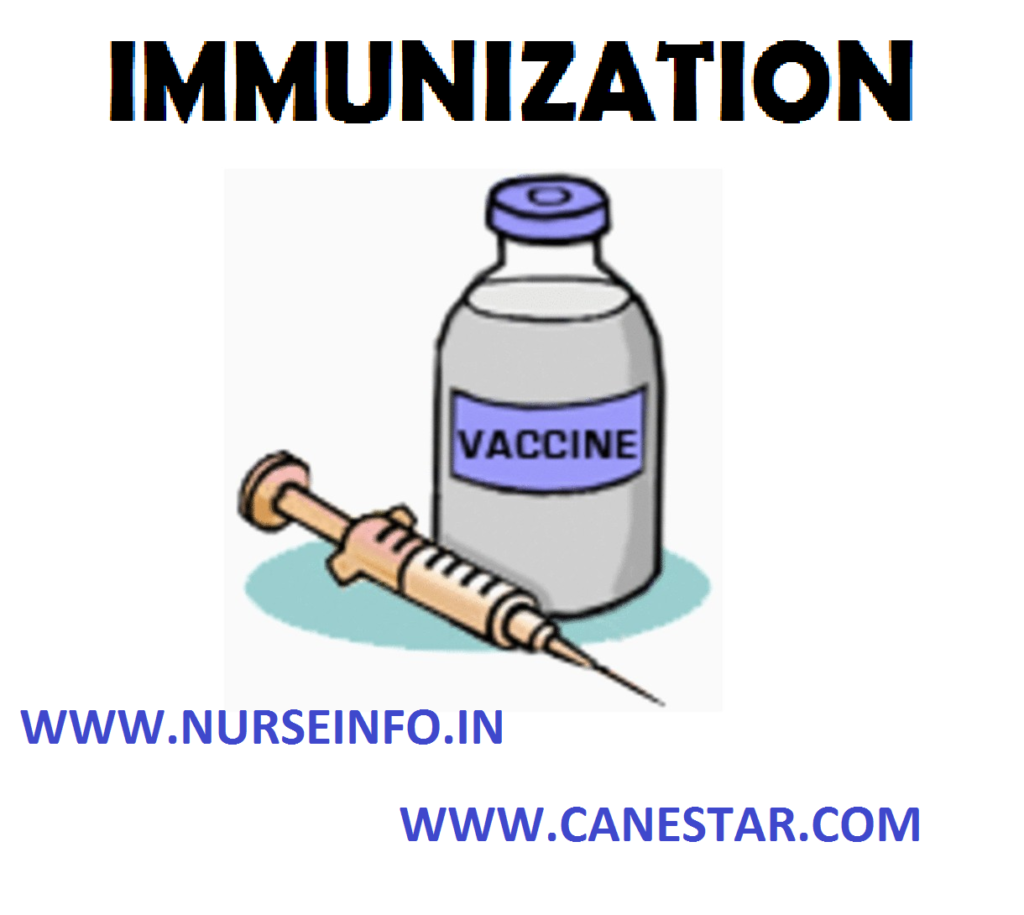IMMUNIZATION – Agents of Immunization and Steps of Vaccine Administration (COMMUNITY HEALTH NURSING)
Immunization is a process of protecting an individual from a disease through introduction of a live, killed or partial component of the living organism into the individual system
AGENTS OF IMMUNIZATION
Vaccines: it is a preparation of an antigen for preventive inoculation which then administered stimulates specific antibody formation in the body
Vaccines may be prepared from live (generally attenuated) organisms, inactivated or killed organisms, extracted cellular fractions
- Live vaccines are more potent immunizing agents than killed vaccines, live vaccines are prepared from attenuated organisms, e.g. small pox, BCG, oral polio, yellow fever
- Killed vaccines: organisms killed by heat or chemicals, when injected stimulate active immunity, e.g. typhoid, cholera, plague, whooping cough, poliomyelitis (Salk vaccine). Booster doses are needed to keep up the immunity
- Toxoid: certain organisms produce exotoxins, e.g. diphtheria and tetanus bacilli. The toxins produced in these organisms are detoxicated and used in the preparation of vaccines
- Cellular fractions: some vaccines are prepared from extracted cellular fractions, e.g. meningococcal vaccine from the polysaccharide part of cell wall
- Combinations: if more than one kind of immunizing agent is included in the vaccine, it is called mixed or combined vaccine. The well-known combinations are DPT, DT, DP and MMR
Immunoglobulin: the human immunoglobulin system is composed of 5 major classes – IgG, IgA, IgM, IgD, IgE and subclasses within them
STEPS OF VACCINE ADMINISTRATON
- Administering of DPT, DT, and TT:
- check the label for correct dose
- shake the vial to mix the content well
- remove the centre of the metal cap
- use 2 ml syringe and 23 G needle to aspirate 0.6 ml vaccine
- prepare the baby for intramuscular injection
- select the appropriate site and inject quickly
- administering OPV:
- OPV comes in two types of containers: plastic and glass vial with cover
- Let the mother hold the baby firmly lying on his back
- Open the child’s mouth by squeezing his cheeks gently between your fingers
- Administer correct number of drops usually 2 drops. Also check manufacturer’s instructions
- Make sure the dropper should not touch the mouth
- Make sure the child swallows. If he spits it out, give another dose
- Administration of measles vaccine:
- Position the baby with the help of mother
- Take 1 ml sterile syringe and 22 G needle
- Clean the exposed rubber cap of the vial with spirit swab
- Withdraw 0.6 ml of the reconstituted vaccine into the syringe and expel any air bubbles and extra vaccine from the syringe until there is exactly 0.5 ml
- Select the upper part of child’s arm, push needle into the pinched up skin and inject the vaccine
- Administration of BCG vaccination:
- Let the mother hold the baby and free its arm from the clothes
- Prepare a tubercular syringe with intradermal needle
- Withdraw about 0.8 ml of vaccine and expel the air bubble
- Inject BCG vaccine in the left arm hold the syringe by scale pointing upwards
- Insert tip of the needle into the sign and keep the needle flat along the skin
- Hold the plunger end of the syringe between the index and middle finger of your right hand and press the plunger with your right thumb
- Inject 0.1 ml vaccine and withdraw the needle


